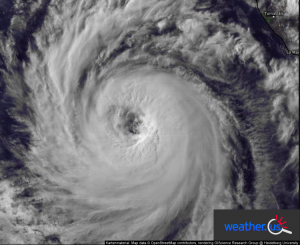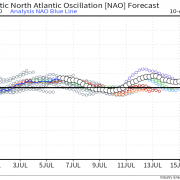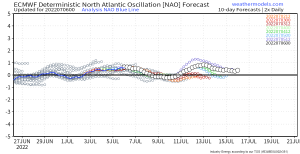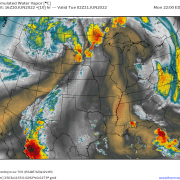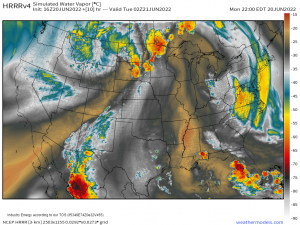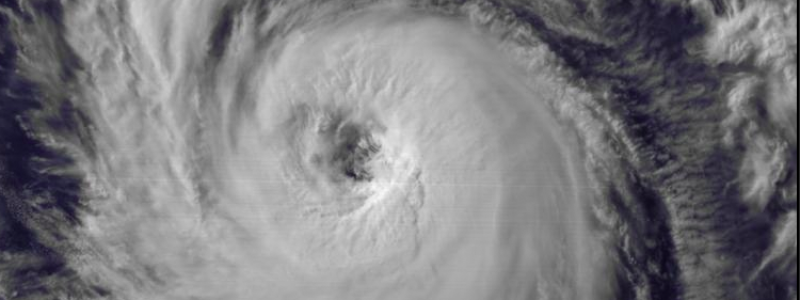
Tropical Storms and Hurricanes
While it’s fairly rare that a major hurricane makes landfall on the US coastline, tropical systems of all sorts can impact the US with or without an official name or landfall. . Furthermore, tropical systems rarely if ever stop at the coast. Some of the worst tropical cyclone impacts are felt hundreds or even thousands of miles away from the coast as tropical moisture produces flooding rains. So what are the different types of tropical systems, how do they form, what do they need to strengthen, and what kinds of impacts can they bring us? I’ll answer all of those questions and more below.
There are four main types of tropical systems, tropical disturbances, tropical depressions, tropical storms, and hurricanes. In different part of the world, the terminology varies slightly but the idea is still the same. Tropical disturbances are loosely organized clusters of showers and thunderstorms that have some sort of wind shift or low pressure associated with them. They bring heavy rains and occasionally gusty winds up to 20 or 30 mph. Some tropical disturbances organize enough to earn the next level of designation which is that of the tropical depression.
Tropical depressions must have a closed center of circulation that is associated with a warm core system. This means that the warmest air in the storm system is found at its core. This is different than a typical cold core mid latitude storm where the warmest air is found well south and east of the storm’s center. Tropical depressions have sustained winds between 15 and 39 mph. Note that sustained winds are measured over a period of several minutes and do not count gusts which typically only last a few seconds. While tropical depressions don’t produce damaging winds, they can produce torrential rains that often lead to flooding. Once a tropical depression begins producing sustained winds of 40 mph or greater, the system earns the next level of designation which is that of the tropical storm. Tropical storms can produce winds up to 73 mph which can produce wind damage in addition to flooding. If winds in a tropical storm exceed 73 mph, it becomes a hurricane. Winds in a hurricane can exceed 200 mph in the most powerful of storms though it’s rarely if ever the winds that are the biggest threat.
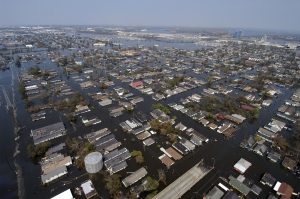
While high winds dominate the headlines, flooding is often the most dangerous part of a hurricane or tropical storm.
While the winds in a tropical system can be quite powerful, air in motion rarely if ever packs as much of a punch as water in motion. Flooding is by far the biggest threat in a hurricane and is an impact that can extend hundreds of miles from where a storm makes landfall. As a hurricane nears the shore, winds blowing towards the shore begin to pile up a bulge of water known as the storm surge. When tidal cycles combine with the storm surge, sometimes referred to as the “storm tide”, water can rise several feet above normal levels resulting in widespread and damaging flooding. Combined with large waves that can reach several stories in height, water is easily the most dangerous element of a hurricane near the coast. How about away from the coast? A hurricane’s winds slow down as the storm moves inland due to friction with the land. The tropical moisture, however, takes much longer to dissipate. When tropical systems move inland, that moisture drives heavy rains that can lead to devastating floods well away from the coast and well after the storm makes landfall and weakens. Some tropical systems can drop feet of rain in just a couple days!
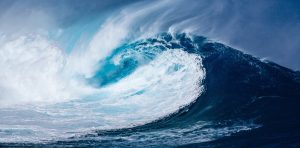
Even if a storm never makes landfall, it can still produce dangerous swells that often travel for thousands of miles.
While high winds and flooding are the main threats with landfalling storms or storms that make very close swipes at the coast, systems hundreds or even thousands of miles offshore can be dangerous too. As the winds of a hurricane race across the surface of the water, large waves can build. These waves can travel thousands of miles as deep sea swells and when they reach land, their energy is once again released as large breaking waves that can pound coastal buildings and docks as well as generate dangerous rip currents at the beaches.
Now that we know what types of impacts tropical storms and hurricanes can have on us, how do they form and why do most hurricanes form in the late summer or early fall? Hurricanes need three things to form. They need some sort of initial “seed” disturbance. This can be a tropical wave from Africa, the remnants of a cold front, or the leftovers from a previous tropical system. To develop the big towering thunderstorms needed for strengthening, tropical systems need warm waters that are at least 80F.
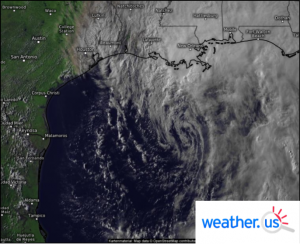
Wind shear and dry air can prevent thunderstorms from forming near the center of a tropical storm, thus preventing the storm from strengthening.
In order for the storms to organize into large clusters, winds aloft, also known as wind shear, must be light. If there is high wind shear, the thunderstorms will become disorganized and the storm will be unable to strengthen. Dry air can also disrupt tropical systems by discouraging the development of intense thunderstorms. Dry air is often present across the Atlantic ocean, particularly early in the year as dusty airmasses blow off the Sahara desert. This so called Saharan Air Layer (SAL) is one of the top inhibitors of tropical activity in the Atlantic. Dry air can also come off the North American continent though that is typically less common. If a disturbance moves into an area with low wind shear and warm ocean temperatures, watch out!
Now that you know more about how tropical systems form and what their impacts can be, be sure to watch the satellite imagery and model data to see if there are any potential storms in the forecast!
Feel free to send me an email if you have any questions about the weather you’d like me to explain! jack@weather.us
-Jack Sillin
